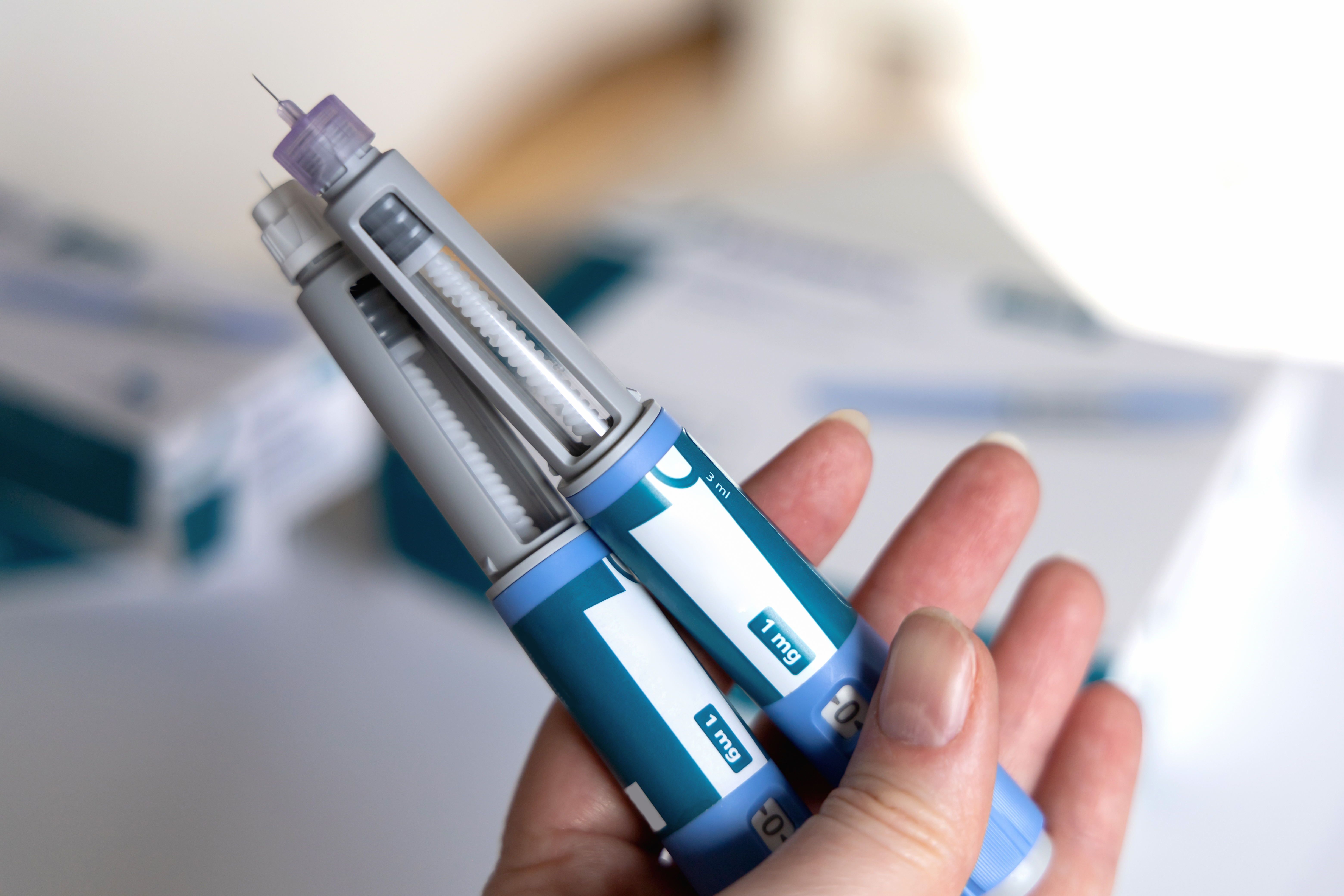Medicare Price Negotiations To Continue Under the Trump Administration
The Centers for Medicare & Medicaid Services plans to negotiate the prices for 15 new drugs, although it says its seeking "greater transparency" in drug price talks.


The Centers for Medicare and Medicaid Services is moving forward with Medicare drug price negotiations under the Trump administration, although it said it is seeking to bring "greater transparency" to the negotiating table.
In a statement, CMS said lowering drug prices for Americans is a top priority of the Trump administration but that as CMS begins the next round, which includes popular, but expensive weight-loss drugs, Ozempic and Wegovy, it will give "stakeholders" a chance to provide ways to improve the negotiation process.
"As the second cycle begins under the Trump Administration, CMS is committed to incorporating lessons learned to date from the program and to considering opportunities to bring greater transparency in the Negotiation Program," wrote CMS. "CMS intends to provide opportunities for stakeholders to provide specific ideas to improve the Negotiation Program, consistent with the goals of achieving greater value for beneficiaries and taxpayers and continuing to foster innovation." The program has faced criticism from some of the pharmaceutical companies which argue pharmacy benefit managers drive the prices of prescription medicine up.
From just $107.88 $24.99 for Kiplinger Personal Finance
Become a smarter, better informed investor. Subscribe from just $107.88 $24.99, plus get up to 4 Special Issues

Sign up for Kiplinger’s Free Newsletters
Profit and prosper with the best of expert advice on investing, taxes, retirement, personal finance and more - straight to your e-mail.
Profit and prosper with the best of expert advice - straight to your e-mail.
Earlier in January, CMS announced the 15 drugs they are targeting. Ozempic and Wegovy were notable drugs added to the second round of price talks, given that while they have been effective in helping people lose weight, they have faced a lot of backlash because of the high costs associated with them. The list price for Wegovy is $1,349.02 per injection while Ozempic’s list price is $997.58 per injection, which is cost prohibitive for many people who can benefit from these drugs. Insurance, if it's covered, can lower the cost, but it is still too pricey for many.
Medicare’s list includes drugs that cost taxpayers billions
The list includes 15 drugs the White House plans to negotiate, an increase from 10 in the last round. The negotiations between Medicare and the drugmakers tend to take place over several months and the new negotiated prices don’t kick in until 2027. Prior to the White House's statement under President Trump, it was not clear how negotiations would be impacted by Trump and a new Secretary of Health and Human Services.
The drug negotiations are part of the Inflation Reduction Act, put on the books in 2022. The Act allows Medicare, for the first time, to negotiate drug prices directly with the pharmaceutical companies.
When announcing the latest round, CMS said in a press release that between November 2023 and October 2024, roughly 5.3 million people with Medicare Part D coverage used these drugs for several conditions ranging from cancer to type 2 diabetes. The drugs on the list accounted for about $41 billion in total gross covered prescription drug costs under Medicare Part D, or about 14%.
“Last year we proved that negotiating for lower drug prices works. Now we plan to build on that record by negotiating for lower prices for 15 additional important drugs for seniors,” said HHS Secretary Xavier Becerra. “Today’s announcement is pivotal – the Inflation Reduction Act is lowering prices for people on Medicare. HHS will continue negotiating in the best interest of people with Medicare to have access to innovative, life-saving treatments at lower costs.”
The drugs identified for negotiation in the second round include:
- Ozempic; Rybelsus; Wegovy
- Trelegy Ellipta
- Xtandi
- Pomalyst
- Ibrance
- Ofev
- Linzess
- Calquence
- Austedo; Austedo XR
- Breo Ellipta
- Tradjenta
- Xifaxan
- Vraylar
- Janumet; Janumet XR
- Otezla
Ozempic, Wegovy and other GPL-inhibitors are in high demand in the U.S. Due to that demand, Medicare covering them for diabetes and potentially other FDA-approved uses could increase the cost to taxpayers. Lowering the cost of the drugs would also make the medications accessible to more individuals. If negotiations are successful, Medicare will have lowered the prices on 25 drugs that are commonly used in America. CMS said in the coming years it will identify up to 15 more drugs, including drugs covered under Part B and Part D, to negotiate lower costs. It will also identify up to 20 more drugs for each cycle after that as per the plan laid out in the Inflation Reduction Act.
What are GLP-1 drugs?
Ozempic and Wegovy fall in the GLP-1 agonists class. They were originally prescribed to treat diabetes under the generic name semaglutide but have proven to be effective in reducing weight. Ozempic is FDA-approved for the treatment of diabetes and Wegovy is FDA-approved for treating obesity. The drugs mimic a gut hormone that decreases hunger and delays stomach emptying, so people eat less and don’t face severe cravings. They come in an injectable form, which patients administer once a week. Other GLP-1 drugs are available to make it easier, including Rybelsus, which is a daily pill that has the same effects as Ozempic.
Related content
Profit and prosper with the best of Kiplinger's advice on investing, taxes, retirement, personal finance and much more. Delivered daily. Enter your email in the box and click Sign Me Up.

Donna Fuscaldo is the retirement writer at Kiplinger.com. A writer and editor focused on retirement savings, planning, travel and lifestyle, Donna brings over two decades of experience working with publications including AARP, The Wall Street Journal, Forbes, Investopedia and HerMoney.
-
 4 Great Tools to DIY Your Own Financial Plan
4 Great Tools to DIY Your Own Financial PlanSmart Savings Several tools picked out by Kiplinger that DIYers can use to make their own financial plan.
-
 The 7-Month Deadline That Sets Your Lifetime Medicare Premiums
The 7-Month Deadline That Sets Your Lifetime Medicare PremiumsUnderstanding Medicare enrollment is crucial, as missing deadlines can lead to permanent late enrollment penalties and gaps in coverage.
-
 Retirees Living in Portugal: You Need a Post-NHR Tax Strategy
Retirees Living in Portugal: You Need a Post-NHR Tax StrategyWhen your 10-year Non-Habitual Resident tax break ends, you could see your tax rate soar. Take steps to plan for this change well before the NHR window closes.
-
 4 Great Tools to DIY Your Own Financial Plan
4 Great Tools to DIY Your Own Financial PlanSmart Savings Several tools picked out by Kiplinger that DIYers can use to make their own financial plan.
-
 The 7-Month Deadline That Determines Your Lifetime Medicare Premiums
The 7-Month Deadline That Determines Your Lifetime Medicare PremiumsUnderstanding Medicare enrollment is crucial, as missing deadlines can lead to permanent late enrollment penalties and gaps in coverage.
-
 If You're a U.S. Retiree Living in Portugal, Your Tax Plan Needs a Post-NHR Strategy ASAP
If You're a U.S. Retiree Living in Portugal, Your Tax Plan Needs a Post-NHR Strategy ASAPWhen your 10-year Non-Habitual Resident tax break ends, you could see your tax rate soar. Take steps to plan for this change well before the NHR window closes.
-
 Could Target-Date Funds With Built-In Income Guarantees Be the Next Evolution in Retirement Planning?
Could Target-Date Funds With Built-In Income Guarantees Be the Next Evolution in Retirement Planning?With target-date funds falling short on income certainty, retirement plans should integrate guaranteed income solutions. Here is what participants can do.
-
 Should You Renew Your CD?
Should You Renew Your CD?With rate cuts impacting earnings, we examine if now is a wise time to renew CDs.
-
 7 Ways to Plan Now to Save on Medicare IRMAA Surcharges Later
7 Ways to Plan Now to Save on Medicare IRMAA Surcharges LaterUnderstand the critical two-year lookback period and why aggressive planning before you enroll in Medicare is the most effective way to minimize IRMAA.
-
 Where to Store Your Cash in 2026
Where to Store Your Cash in 2026Set yourself up for success with these strategies.
-
 The 'Best of Both Worlds' Rule of Retirement Spending
The 'Best of Both Worlds' Rule of Retirement SpendingIt's the 4% rule on steroids. Here's what it is and why it may work for you.